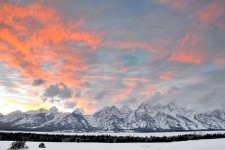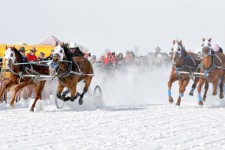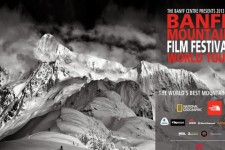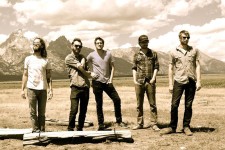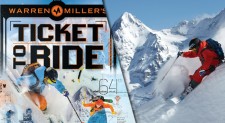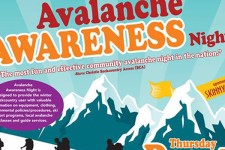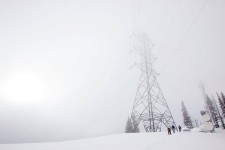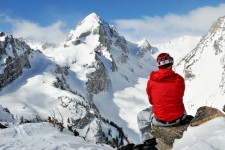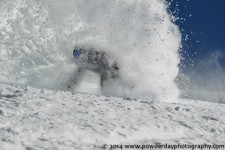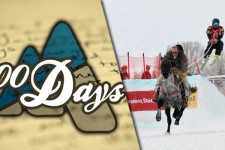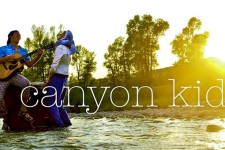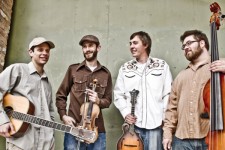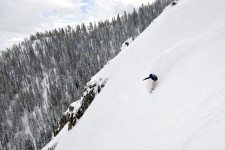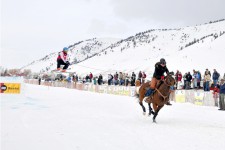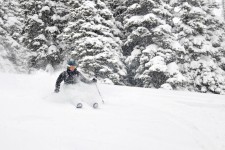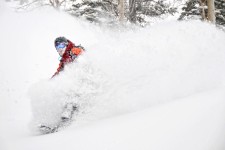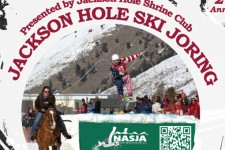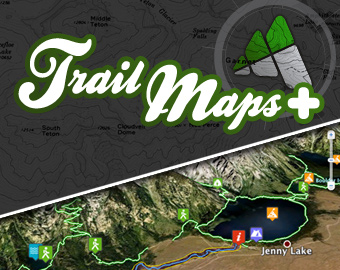Hundred Days: 11/29/11
Not a Ticket to Ride
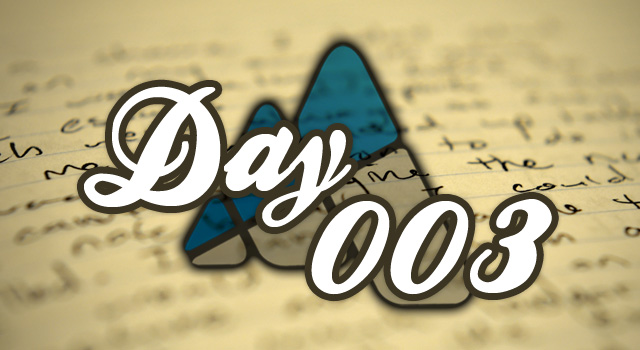
Day 003: 11/29/11 – Not a Ticket to Ride
Written by: Robert Cocuzzo
Barring the occasional job interview, no one in Jackson Hole really cares where you went to school. Come wintertime, avalanche education is the preeminent study in this valley. The classroom, though unforgiving, trumps any campus in the world. Unlike that liberal arts degree you may have eked out at some debt-incurring college all those years ago, avalanche awareness has the realest world application: It can save your life.
With this in mind, I dropped a handful of wrinkled tips on a beacon, probe, and shovel and signed up for an Avy 1 course in town. My prep reading list consisted of Jill Fredston’s Snow Sense and Snowstruck: In the Grips of Avalanches, and Bruce Tremper’s Staying Alive in Avalanche Terrain (o so provocative titles to read in public). I plowed through the pages, often getting hung up on terrible descriptions of tragedy: mountain towns whipped out; frantic searches for buried friends and family members; skiers dug out mere minutes too late. Gradually my own fear became vivid: triggering a slide, being sent through a sieve of frozen trees, and left deeply buried with my head pinned between my legs, bleeding and helpless.
Respecting this fear kept me inbounds to that point. How I yearned to penetrate those gates and enter the virgin embrace of the State Forest. The faint hoots and hollers coaxed me to the brink where even just a few feet beyond the boundary line the snow lay like a beckoning mistress. Against primal urgings, I resisted. If for nothing else, going into the backcountry without proper equipment and knowledge makes you a no-good asshole, plain and simple. Nothing incenses an experienced backcountry skier than a gondola full of gapers who between swigging beers from their backpacks prod, “So how do we get to the backcountry?” They are unworthy to frolic the pow fields that flourish just outside the gates. Unworthy not because they’re putting their own lives in danger, but because their endangering the lives of those who have earned the right to be there.
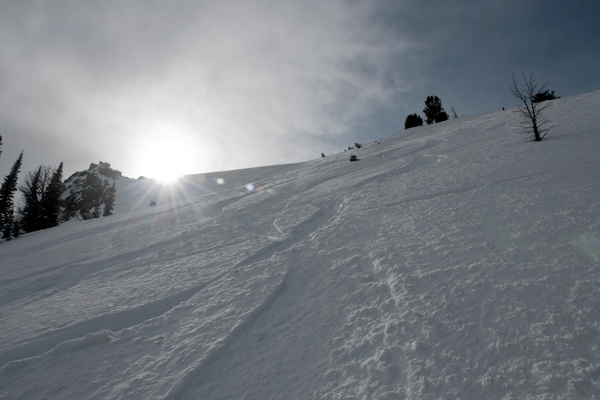
Sure, back in the good old days, many a skier ducked the rope with nothing more than a shovel, maybe only one for an entire posse. Those days are forgiven like most grievances of the ignorant past, just as the raging alcoholic who drove a car through a house in his rebellious youth becomes: “O, your father used to be a drinker.” When it comes to skiing avalanche-prone terrain, ignoring contemporary education is an egregious oversight. I crossed the threshold of the avy class bearing this seriousness and truth, a pact to myself that I would not go out of bounds without the proper knowledge.
Day one was dedicated to beacon training. I once read an account of a skier who successfully dug out a friend that was buried in a slide. After the horrifying episode, the skier was asked what was going through his mind as he searched for his longtime ski partner. “Nothing,” he responded. “I was a robot.” In a hunt where the search zone can be staggering and each passing minute determines a fate of miracle or tragedy, no time can be squandered on emotion or indecision. Beacon drills must be conducted with such stringent regularity that if such a catastrophe were to happen, swift execution of a search would be nothing less than second nature.
And so we practiced and practiced. Breaking into groups up on Teton Pass, we stomped away at a plot of deep snow to create the footprint of a slide. After a show-and-tell of our beacons, we took turns rescuing a buried beacon and backpack: one person conducting the beacon search, the other two waiting eagerly with probe and shovel. These first drills hinted to how frantic an actual search could be as well as the myriad of pitfalls that can entirely undermine the effort. Add to the mix a toxic surge of panic, and it is easy to understand why many full-burials end up as statistics. “If you’re hitting someone buried the length of the probe, they’re probably already dead,” the guide said matter-of-factly. “Ultimately, you never want to get to this point. You never want to have to use your beacon. You want to avoid a slide at all costs. You have to make good decisions out there.”
And that was the resounding message I skied away with after the three days of Avy 1. The variables that cause avalanches are many, thrown into a temperamental equation that we will endlessly try to understand but never fully solve. The only true constant we have in avalanche terrain, the only real control we can hang on to, is our decision to go or not to go. Consumed by the euphoric glee of powder skiing, sound decision-making can become gravely impaired if not frivolous. A false sense of invincibility rises up with each frictionless turn, washing over us with each ensuing face shot. We can be seduced by the illusion of oneness with the elements, that we enjoy some symbiotic relationship of man and mountain. But that is not so. Even with all the knowledge in the world, the best equipment, a lifetime of experience, we are still nothing more than guests in the backcountry, treading ever so lightly, hoping not to wake the beast. Avalanche education is not a ticket to ride, not some pass allowing us to go out of bounds. Rather it is a time to give pause, and more fully appreciate the price of admission.
Other Posts from The Mountain Pulse
Tweet
!function(d,s,id){var js,fjs=d.getElementsByTagName(s);if(!d.getElementById(id)){js=d.createElement(s);js.id=id;js.src="//platform.twitter.com/widgets.js";fjs.parentNode.insertBefore(js,fjs);}}(document,"script","twitter-wjs");
02/18/14 - A break in the storm reveals the sight that never gets old, a breathtaking sunset in Grand Teton Nation Park. Photographer: Stephen Williams
Previous Photos
Read More
Tweet
!function(d,s,id){var js,fjs=d.getElementsByTagName(s);if(!d.getElementById(id)){js=d.createElement(s);js.id=id;js.src="//platform.twitter.com/widgets.js";fjs.parentNode.insertBefore(js,fjs);}}(document,"script","twitter-wjs");
The 43rd Annual Shriner's Cutter Races
Previewed By: Adam Glos
Saturday, February 15th // Sunday, February 16th
Melody Ranch // Jackson, WY
12:00 pm – 3:00 pm
General Admission: $15
This weekend, give your ski ...
Read More
Tweet
!function(d,s,id){var js,fjs=d.getElementsByTagName(s);if(!d.getElementById(id)){js=d.createElement(s);js.id=id;js.src="//platform.twitter.com/widgets.js";fjs.parentNode.insertBefore(js,fjs);}}(document,"script","twitter-wjs");
The 2014 Banff Mountain Film Festival World Tour
Sponsored By: Skinny Skis
Previewed By: Adam Glos
Saturday, Feb. 8th / 8 pm // Sunday, Feb 9th / 7 pm
Jackson Hole High School ...
Read More
Tweet
!function(d,s,id){var js,fjs=d.getElementsByTagName(s);if(!d.getElementById(id)){js=d.createElement(s);js.id=id;js.src="//platform.twitter.com/widgets.js";fjs.parentNode.insertBefore(js,fjs);}}(document,"script","twitter-wjs");
Moon Taxi
Previewed By: Ellie Stratton-Brook
Saturday January, 25th
Pink Garter Theatre // Jackson, WY
With special guests the Acoustic Weapons
Doors - 8:00pm // Show - 9:00pm
Tickets: $14 in advance // Buy Tickets ...
Read More
Tweet
!function(d,s,id){var js,fjs=d.getElementsByTagName(s);if(!d.getElementById(id)){js=d.createElement(s);js.id=id;js.src="//platform.twitter.com/widgets.js";fjs.parentNode.insertBefore(js,fjs);}}(document,"script","twitter-wjs");
2014 Coldsmoke Awards
Previewed By: Stephen Williams
Saturday January, 18th
Emerson Cultural Center, Bozeman MT
North of the Sun - Filmhuset AS
Never Not Part 2 - Nike
Valhalla - Sweetgrass Productions
Previous Photos
Read More
Tweet
!function(d,s,id){var js,fjs=d.getElementsByTagName(s);if(!d.getElementById(id)){js=d.createElement(s);js.id=id;js.src="//platform.twitter.com/widgets.js";fjs.parentNode.insertBefore(js,fjs);}}(document,"script","twitter-wjs");
Warren Miller's Ticket to Ride
Previewed By: Stephen Williams
Friday December, 20th
Pink Garter Theatre
All Ages Showing - 6:00 pm
21+ Showing - 9:00pm
$16 / Buy Tickets Online
Read More
Avalanche Awareness Night
Thursday 12/05 - 6:30 to 9:30pm
Jackson Hole Center for the Arts
$5 Donation benefits Teton County Search and Rescue
Previewed by: Stephen Williams
From the time that Powder Magazine's annual Buyer's ...
Read More
Tweet
!function(d,s,id){var js,fjs=d.getElementsByTagName(s);if(!d.getElementById(id)){js=d.createElement(s);js.id=id;js.src="//platform.twitter.com/widgets.js";fjs.parentNode.insertBefore(js,fjs);}}(document,"script","twitter-wjs");
03/20/14 - Spring is right around the corner and with such a high snowpack in Jackson Hole, the touring season will be awesome. Doug Hayden, Kevin Salys and Tyler ...
Read More
Tweet
!function(d,s,id){var js,fjs=d.getElementsByTagName(s);if(!d.getElementById(id)){js=d.createElement(s);js.id=id;js.src="//platform.twitter.com/widgets.js";fjs.parentNode.insertBefore(js,fjs);}}(document,"script","twitter-wjs");
03/15/14 - What a perfect day to be in the mountains. Fresh snow, clear sunny skies and just a little wind. Alex Howell takes a moment to take in ...
Read More
Tweet
!function(d,s,id){var js,fjs=d.getElementsByTagName(s);if(!d.getElementById(id)){js=d.createElement(s);js.id=id;js.src="//platform.twitter.com/widgets.js";fjs.parentNode.insertBefore(js,fjs);}}(document,"script","twitter-wjs");
03/11/14 - Springtime pow surfing with Kyle Martin from Dragon Alliance as he rips into 13" of new snow under bluebird skies at Grand Targhee Resort. Photographer: Kevin Cass ...
Read More
Tweet
!function(d,s,id){var js,fjs=d.getElementsByTagName(s);if(!d.getElementById(id)){js=d.createElement(s);js.id=id;js.src="//platform.twitter.com/widgets.js";fjs.parentNode.insertBefore(js,fjs);}}(document,"script","twitter-wjs");
03/10/14 - 2nd Annual Ski Joring Championships
Written and Photographed By: Stephen Williams
Ski Joring is an event with a perfect mix of Jackson Hole's historic cowboy culture and the new ...
Read More
Tweet
!function(d,s,id){var js,fjs=d.getElementsByTagName(s);if(!d.getElementById(id)){js=d.createElement(s);js.id=id;js.src="//platform.twitter.com/widgets.js";fjs.parentNode.insertBefore(js,fjs);}}(document,"script","twitter-wjs");
Canyon Kids Release Double EP
Written By: Adam Glos
Photos by: Christie Quinn
In case you missed it, the debut album from Canyon Kids hit the electronic shelves recently, proving once again ...
Read More
Tweet
!function(d,s,id){var js,fjs=d.getElementsByTagName(s);if(!d.getElementById(id)){js=d.createElement(s);js.id=id;js.src="//platform.twitter.com/widgets.js";fjs.parentNode.insertBefore(js,fjs);}}(document,"script","twitter-wjs");
<
Head for the Hills
Previewed By: Ellie Stratton-Brook
Thursday March, 6th
Town Square Tavern // Jackson, WY
9:00pm // Tickets: $10 // Buy Tickets Online
Although you may have seen many bluegrass bands around ...
Read More
Tweet
!function(d,s,id){var js,fjs=d.getElementsByTagName(s);if(!d.getElementById(id)){js=d.createElement(s);js.id=id;js.src="//platform.twitter.com/widgets.js";fjs.parentNode.insertBefore(js,fjs);}}(document,"script","twitter-wjs");
03/02/14 - Mark Byall slashes a line in the Jackson Hole Mountain Resort backcountry as the consistent flow of snow continues into March. Photographer: Stephen Williams
Previous Photos
Read More
Tweet
!function(d,s,id){var js,fjs=d.getElementsByTagName(s);if(!d.getElementById(id)){js=d.createElement(s);js.id=id;js.src="//platform.twitter.com/widgets.js";fjs.parentNode.insertBefore(js,fjs);}}(document,"script","twitter-wjs");
02/23/24 - A skier flies off a jump being pulled behind a horse racing down a track at Melody Ranch just south of Jackson for the 2nd Annual Ski ...
Read More
Tweet
!function(d,s,id){var js,fjs=d.getElementsByTagName(s);if(!d.getElementById(id)){js=d.createElement(s);js.id=id;js.src="//platform.twitter.com/widgets.js";fjs.parentNode.insertBefore(js,fjs);}}(document,"script","twitter-wjs");
02/22/14 - February has been incredible in Jackson Hole and it's not quite over yet. Marian Herbick digs into the bottom half of Four Pjnes with more fresh snow ...
Read More
Tweet
!function(d,s,id){var js,fjs=d.getElementsByTagName(s);if(!d.getElementById(id)){js=d.createElement(s);js.id=id;js.src="//platform.twitter.com/widgets.js";fjs.parentNode.insertBefore(js,fjs);}}(document,"script","twitter-wjs");
02/21/14 - Nick Grenoble left his snorkel at home and had to come up for air between trips to the whiteroom. Jackson Hole Mountain Resort was unbelievably deep today ...
Read More
Tweet
!function(d,s,id){var js,fjs=d.getElementsByTagName(s);if(!d.getElementById(id)){js=d.createElement(s);js.id=id;js.src="//platform.twitter.com/widgets.js";fjs.parentNode.insertBefore(js,fjs);}}(document,"script","twitter-wjs");
The 2nd Annual North American Skijoring Championships
Previewed By: Adam Glos
Saturday, February 22nd - 12:00pm
1 Sunday, February 23rd - 11:00am
Melody Ranch // Jackson, WY
General Admission: $10 // Kids 12 and ...
Read More





